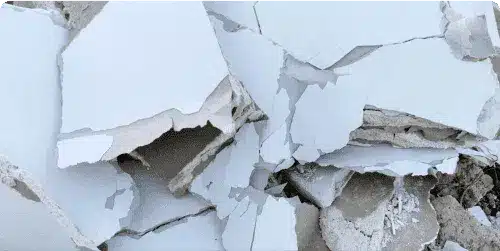Planning a home renovation, demolition project, or large-scale cleanup? Before you even think about renting a dumpster, consider the significant environmental and cost savings achievable through proactive recycling. This guide empowers you to effectively sort, prepare, and dispose of recyclable materials, reducing your waste footprint and potentially saving you money.
What Types of Materials Can Be Recycled from My Project?
Many construction and demolition materials are readily recyclable. Understanding which materials can be recycled and how to properly sort them is crucial for maximizing landfill diversion. Common recyclable materials include wood, various metals, certain plastics, and paper or cardboard. Wood scraps, pallets, and even larger beams can often be repurposed or sent to specialized recycling facilities for processing into mulch or other wood products. Metals such as copper, aluminum, and steel are highly valuable recyclables and often command a good price at scrap yards. Plastic containers and packaging materials commonly used in construction can be recycled, although it's important to check local guidelines for acceptable types and cleaning requirements. Finally, paper and cardboard packaging, blueprints, or other paper waste should be separated for recycling. Remember to always check with your local recycling center for specific guidelines on acceptable materials and any pre-processing requirements. Proper sorting and preparation are essential for efficient recycling. This includes source separation, cleaning items of debris and contaminants, and utilizing appropriate containers for different material types. Properly recycling construction waste is a significant step towards sustainable construction practices.

How Can I Sort and Prepare Materials for Recycling?
Effective sorting is the cornerstone of successful recycling. Start by designating separate bins or areas for different types of materials like wood, metal, plastic, and paper. Clean materials thoroughly; removing any dirt, grease, or other contaminants significantly increases their recyclability. For example, food-contaminated plastic containers are often rejected by recycling facilities. Larger items, like old appliances or building materials, might require disassembly or pre-processing before disposal. Consider breaking down cardboard boxes to conserve space and improve efficiency. Remember, the cleaner and more organized your materials, the easier it will be for recycling centers to process them. This also reduces the risk of contamination and rejection. Employing a systematic approach to waste sorting minimizes landfill waste and encourages eco-conscious disposal. Careful preparation leads to a higher recycling rate and efficient waste management.
Where Can I Take Recyclable Materials?
Numerous options exist for disposing of recyclable construction and demolition materials. Your local municipality likely offers curbside recycling programs for some materials, though construction waste often requires different handling. Many communities operate dedicated recycling centers specializing in construction and demolition debris, offering convenient drop-off points for various materials. These facilities often accept wood, metal, and certain plastics. For specific materials like electronics, hazardous waste, or certain types of plastics, you might need to find specialized recycling or disposal facilities, potentially requiring transportation. Online searches for “recycling centers near me” can reveal locations and their accepted materials. Contact facilities in advance to verify what they accept and their operating hours. Always confirm their guidelines for drop-off procedures to ensure your materials are properly handled. Locating the right facilities is key to efficient and environmentally responsible disposal of construction and demolition waste.
How Can I Repurpose or Donate Unwanted Items?
Before discarding anything, consider whether it could be repurposed or donated. Many building materials, even seemingly unusable items, can find new life through creative reuse. Wooden pallets, for example, can be transformed into furniture, shelving units, or garden features. Old bricks or tiles might find use in creating pathways or decorative accents. Similarly, certain metal components can be repurposed for artistic or functional projects. If you lack the skills or time for repurposing, consider donating usable materials. Local charities, Habitat for Humanity, or community building projects often accept salvaged materials. Donating building materials can provide much-needed resources for those undertaking renovation or repair projects on a limited budget. Repurposing and donation contribute to waste reduction while promoting resourcefulness and community support.
Best Practices for Deconstruction vs. Demolition
Deconstruction, the careful dismantling of a structure, offers significant advantages over demolition regarding material salvage and recycling. While demolition often results in a large volume of mixed waste, deconstruction allows for the selective removal of reusable components, maximizing material recovery. Deconstruction minimizes the environmental impact associated with waste disposal and can even generate revenue from the sale of salvaged materials. Planning a deconstruction project requires expertise and careful coordination, but the benefits – in terms of recycling, sustainability, and cost savings – make it a worthwhile consideration for many projects.
Innovative DIY Projects Using Recycled Materials
Transforming discarded materials into new creations offers creative outlets and environmental benefits. Repurposing wood scraps into furniture, making planters from old containers, or constructing art pieces from metal scraps are just a few examples. The internet provides an endless array of DIY project ideas using recycled materials, appealing to all skill levels. This helps reduce waste while developing valuable skills. Engaging in such projects cultivates resourcefulness, leading to a mindful approach to resource utilization and environmental stewardship.
How to Create a Waste Reduction Plan for Future Projects
Proactive planning minimizes waste generation. Before starting any project, create a detailed waste management plan that identifies materials to be used, anticipated waste quantities, and a strategy for handling each type of waste. This should incorporate sorting, Program recycling, repurposing, and proper disposal guidelines. Incorporating deconstruction techniques where possible can drastically reduce waste volume. Regularly review and refine your waste management plans to continuously improve sustainability practices across your projects. Prioritizing sustainable practices from the initial planning stages fosters a more environmentally friendly approach to home improvement and construction.
What should I do with hazardous waste from my project?
Hazardous waste such as paints, solvents, and batteries require specialized handling and disposal. Never mix them with regular household trash or recyclable materials. Contact your local waste management authority or a hazardous waste disposal facility for proper disposal methods. Many areas offer designated drop-off locations or collection events for hazardous waste.
Can I recycle mixed materials?
Generally, no. Recycling facilities are designed to process materials separately. Mixing different materials contaminates the entire batch, rendering it unrecyclable. Always maintain careful source separation to maximize recycling efficiency.
Are there any items that cannot be recycled?
Some materials, such as certain plastics or heavily contaminated items, may not be recyclable within your local waste management system. Consult your local guidelines or recycling center for a list of non-recyclable items.
What are the benefits of recycling over landfill disposal?
Recycling conserves natural resources, reduces landfill burden, minimizes greenhouse gas emissions, and supports a circular economy. It's a more environmentally responsible approach than simply sending waste to a landfill.

By following these steps and incorporating sustainable practices into your projects, you can significantly reduce your environmental impact and potentially save money by minimizing your reliance on dumpsters. Remember to always check your local guidelines for specific recycling instructions and disposal options. Happy recycling!